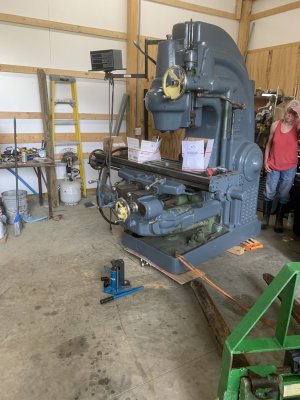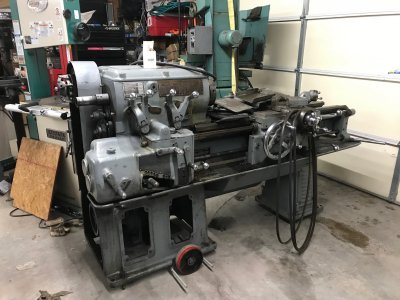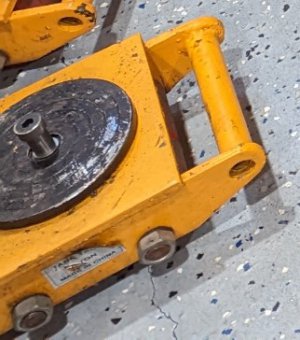That is still an extremely narrow base for such a top heavy load. It does improve the situation. It widens the base slightly, and movement is largely constrained to the long axis of the lathe. At least until a turn is tried that is. Take a turn at faster than a snails pace, then have a wheel hit a crack or piece of gravel. . . well. . . things could get exciting. I'd still want something supporting from the top.
If you're moving at "faster than a snails pace", you're doing it wrong! Momentum is your enemy. General rule of thumb is you want the base width to be the same or greater than the height of the center of gravity. More in any direction that you apply horizontal force. Pry bars don't just give you mechanical advantage, used correctly they keep the horizontal force as low as possible, greatly reducing tipping moment. And they truly move things slowly, no momentum, stop prying and things stop moving rather than keep rolling.
That said, these are MUCH, MUCH better than just sitting on skates, as the threaded rod clamps the wheels to the base pretty securely. Enough that it will stop the lathe rather than the lathe sliding off if you're working under simple push/pull/pry bar, as long as you're inching along rather than building up any momentum. And it has to slide quite a ways, lengthwise along the base before it comes loose. Significantly more safety factor than skates that often only need to offset 2-3" in any direction before problems occur. Works well given the base is cast iron, almost 30" wide, not sheet metal. And the wheels are about 6" diameter which makes a difference when dealing with cracks and dirt. Pallet jack wheels are designed to be used in this range/application. Still using a pivoting skate under the tailstock end, but that is at 5' or so from the casters, so if that skate comes out the machine won't tip forward/backward.
But you are right, this is far from the ultimate solution for moving things, just a single step. I use this approach on machines up to 5,000 lbs. Above that and you're pretty much stuck with skates if pivoting is involved, as often a crane support to hold that weight won't fit.. Most knee mills are even more top-heavy than lathes. I have a couple of 8-9000lb machines. That means you move things maybe 1" at a time, then stop and recheck all the skates to be sure another inch won't be problematic. Frequent use of a toe jack to reset the skates. Yes, it can take days ...
Yes, this picture just sucks from a safety perspective. Good thing it isn't an old Star Trek episode or my wife would be in trouble wearing a red shirt

But one notable feature is the use of wood blocking that is just less than the skate height just in front of the yellow skate on the right. It gives some
chance that that the machine has something to keep it from dropping if a skate squirts out. It mean you never move more than an inch before resetting everything. That resetting is usually done with a pole or other mechanism to keep from having to bend over inside the tipping/fall zone of the machine. There are a lot of little tricks that all add up to succes vs failure. Just trying to throw out ideas, but everything and anything you can do helps. Certainly overhead support if available is something to jump on. But without a suitable gantry, tying this to the rafters would just guarantee that it brought the building down.





